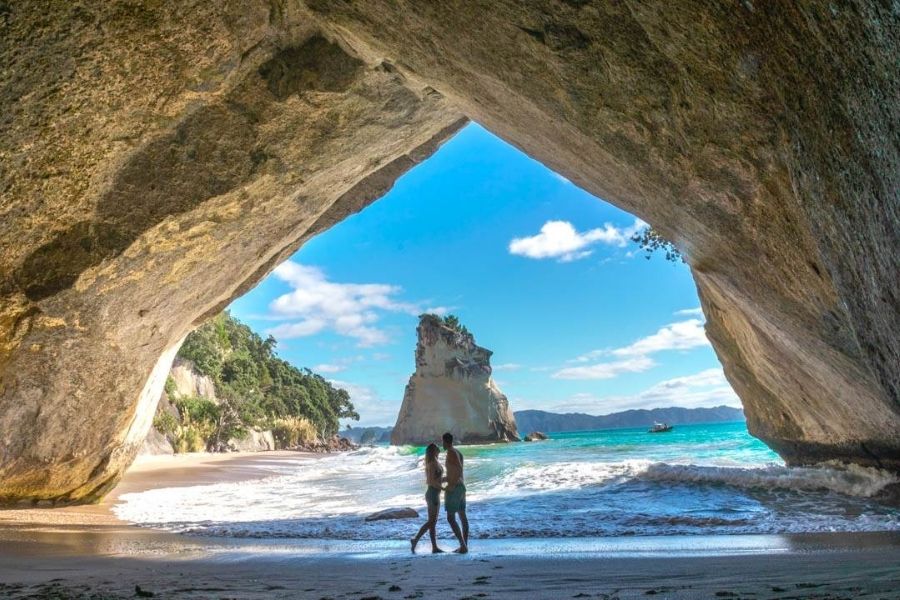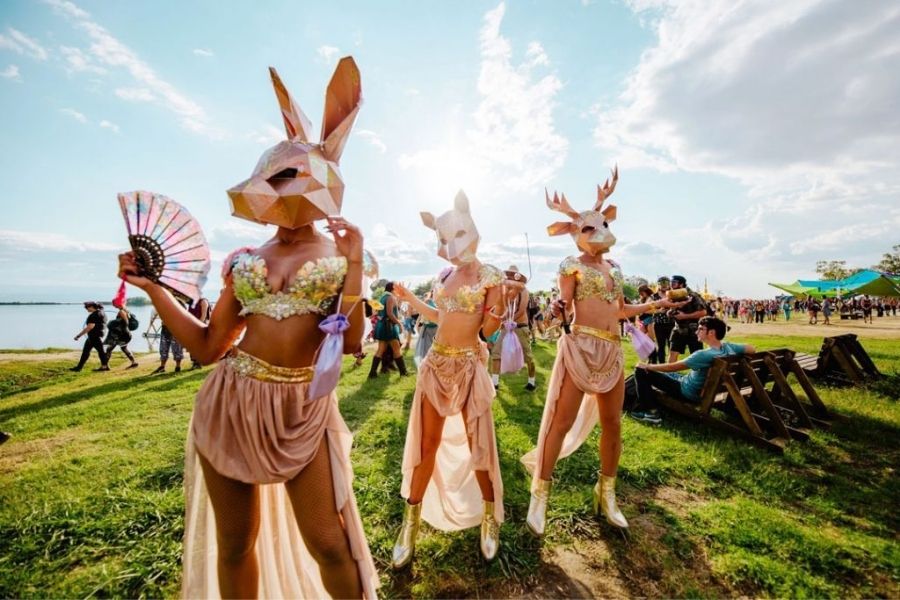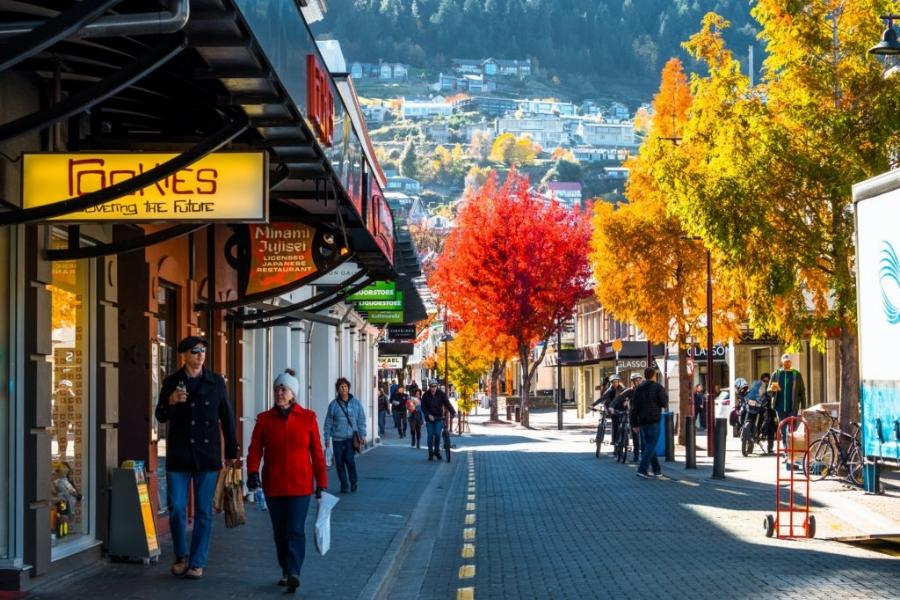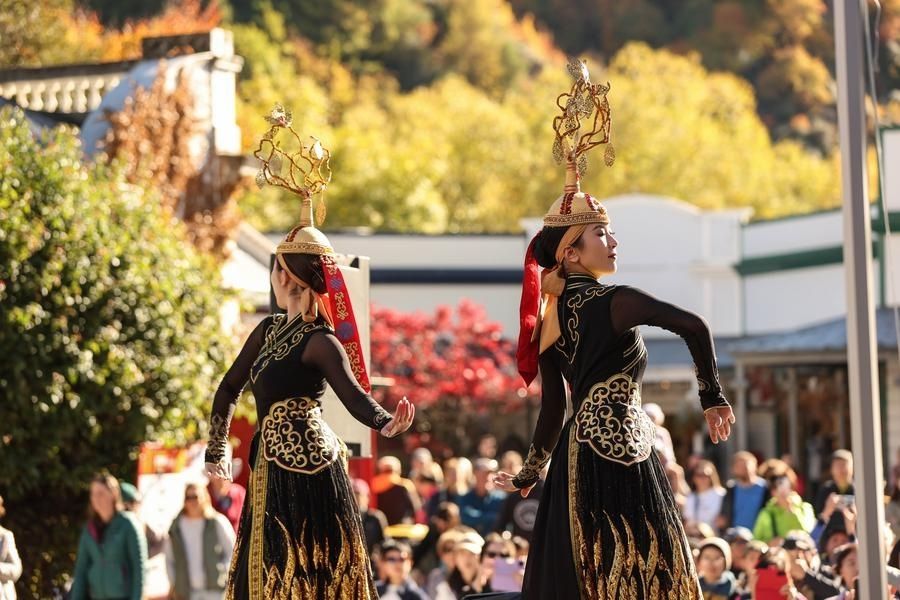Most people agree that the best time to visit New Zealand is from December to March. However, to fully enjoy your New Zealand Shore Excursions depends on your preferences for weather, outdoor activities, and events. This guide from Global Shore Excursions will summarize the best seasons to visit this city, ensuring you make the most of your trip.
New Zealand’s Seasons and Weather Overview

New Zealand’s climate varies by season, offering different experiences throughout the year. Since it is located in the Southern Hemisphere, its seasons are opposite to those in North America and Europe. The best time to visit New Zealand is around summer time, from December to February:
- Summer: December to February, the weather is warm and sunny. Coastal areas enjoy pleasant sea breezes, while inland regions can experience hotter temperatures. This is the peak season for New Zealand Shore Excursions, especially at popular destinations such as Bay of Islands, Auckland, and Wellington.
- Autumn: March to May, brings cooler temperatures. The countryside transforms with vibrant hues of red, orange, and gold, particularly in regions like Central Otago, Queenstown, and Arrowtown. If you prefer quieter experiences, consider Wellington Shore Excursions in autumn to enjoy the colorful foliage and fresh air.
- Winter: June to August, turns New Zealand into a winter wonderland, especially in the South Island. Dunedin Shore Excursions during winter offer a unique experience with snow-covered landscapes and distinctive winter activities.
- Spring: From September to November, the season is characterized by blooming flowers, fresh greenery, and an increase in wildlife activity. This is also an ideal time for Christchurch Shore Excursions, where you can admire beautiful gardens and participate in spring festivals.
The peak season for tourism in New Zealand falls between December and February, when summer attracts the highest number of visitors. However, each season offers unique travel experiences, so the best time to visit New Zealand depends on your demand and hobbies. Let’s explore which one suits your adventure best.
Choosing the Best Time to Visit New Zealand for Your Trip
New Zealand is a year-round destination, offering unique experiences in every season. Whether you prefer sun-soaked beaches, stunning autumn landscapes, thrilling winter adventures, or the vibrant renewal of spring, there’s a perfect time to visit.
- For sun and beaches, visit in summer (December – February).
- For wine and autumn colors, explore in fall (March – May).
- For skiing and winter activities, travel in winter (June – August).
- For spring blooms and wildlife, go in spring (September – November).
Best time to visit New Zealand for beaches and outdoor adventures

Summer (which is form December to February) is the peak travel season in New Zealand, attracting tourists and locals alike with warm weather and long daylight hours. December to February is also the best time to travel New Zealand for dozens of people in the world.
Weather and Climate
During the best time to visit New Zealand in summer, travelers can enjoy warm and pleasant weather, suitable for outdoor adventures. Average temperatures range from 20°C to 30°C (68°F to 86°F), with mostly sunny days and occasional light showers.
Coastal regions, such as Auckland and the Bay of Islands, tend to be warm and humid, while inland areas like Queenstown experience dry heat. The long daylight hours (up to 15 hours) provide ample time to explore beaches, national parks, and vibrant city attractions. Whether you’re planning a road trip, hiking excursion, or a relaxing retreat, the favorable climate ensures a fantastic travel experience.
Top Activities for Cruisers in New Zealand’s Summer
Summer in New Zealand offers a variety of exciting activities. You can participate in them and make the most of this time.
- Beaches: Bay of Islands, Abel Tasman National Park, Coromandel Peninsula.
- Hiking: Tongariro Alpine Crossing, Milford Track, Abel Tasman Coast Track.
- Adventure Sports: Skydiving, bungee jumping, jet boating, white-water rafting.
- Wildlife: Dolphin and whale-watching in Kaikoura and Bay of Islands.
- Island Retreats: Waiheke Island for wine tasting, Stewart Island for wildlife spotting.
- Road Trips & Camping: Great Alpine Highway, West Coast, East Cape.
- Water Activities: Kayaking in Abel Tasman National Park, paddleboarding in Lake Taupo.
- Food & Wine: Summer wines and gourmet cuisine in Marlborough and Hawke’s Bay.
Major Festivals

The summer months as the best time to visit New Zealand bring an abundance of exciting festivals, ranging from music and food fairs to cultural performances and outdoor events. This festive season captivates both locals and international tourists, making the country a buzzing hub of entertainment and celebration.
- Rhythm and Vines (Gisborne, December 29-31): One of New Zealand’s most famous New Year’s Eve music festivals, featuring international and local artists, set against the backdrop of vineyards.
- Marlborough Food & Wine Festival (February): A celebration of the region’s world-renowned wines, offering tastings, gourmet food, and live entertainment.
- Wellington Fringe Festival (February): A vibrant arts festival featuring theater, comedy, music, and street performances across the capital.
- Auckland Lantern Festival (February): A spectacular Chinese cultural celebration with traditional performances, martial arts displays, and thousands of glowing lanterns.
- Splore Festival (February): A unique beachfront festival blending music, art, sustainability, and camping in a stunning coastal setting.
March to May is ideal for scenic road trips and wine tours
Autumn in New Zealand brings cooler temperatures, golden landscapes, and fewer crowds, making it a perfect season for road trips and wine tasting. This is the best time to visit New Zealand to experience the country’s culinary delights and scenic beauty.
Weather and Climate in Autumn

Autumn in New Zealand brings cooler temperatures, fewer crowds, and stunning fall foliage. With fewer crowds and a tranquil atmosphere, autumn offers a unique opportunity to experience New Zealand’s diverse weather and climate in a more intimate, picturesque setting.
- Average temperatures: 10°C to 25°C (50°F to 77°F).
- Crisp mornings, warm afternoons, golden landscapes.
- Rainfall increases in some regions, particularly in the South Island, but days remain pleasant for outdoor activities.
- The North Island remains warmer, while the South Island begins to cool rapidly towards May.
Top Activities in New Zealand During Autumn
New Zealand offers a diverse range of activities during this season, making it the perfect time to explore the country’s stunning landscapes, indulge in local flavors, and experience outdoor adventures. Whether you’re seeking a scenic road trip, an active getaway, or a peaceful retreat, here are some of the best activities to enjoy:
- Road Trips: Central Otago, Hawke’s Bay, Arrowtown.
- Wine & Food: Marlborough, Hawke’s Bay, Central Otago.
- Hiking: Hooker Valley Track, Routeburn Track, Abel Tasman Coast Track.
- Photography: Autumn foliage, lake reflections, stunning sunsets.
- Cycling: Otago Central Rail Trail, Nelson wine routes, Hawke’s Bay Trails.
- Fishing & Relaxation: Trout fishing in Lake Taupo, countryside retreats, boutique lodges.
Popular Festivals in New Zealand in Autumn

New Zealand comes alive with vibrant festivals during Autumn, offering a mix of culinary delights, outdoor adventures, and cultural celebrations. Whether you’re a food enthusiast, a sports lover, or someone who enjoys festive atmospheres, these events provide unique experiences in breathtaking locations.
- Hawke’s Bay Food and Wine Classic (March – May): A premier event showcasing local wines, gourmet cuisine, and top chefs in beautiful vineyard settings.
- Queenstown Marathon (April): A scenic running event through stunning landscapes, drawing runners from around the world.
- Arrowtown Autumn Festival (April): A charming festival featuring parades, markets, live music, and cultural performances celebrating the fall season.
- Whitianga Scallop Festival (May): A seafood lover’s paradise, offering fresh scallop dishes, cooking demonstrations, and live entertainment by the beach.
June to August – Best Time to Visit New Zealand for Snow Sports
Snowfall is common in mountainous regions, particularly in the Southern Alps, making it the best time to visit New Zealand for snow sports. Coastal areas remain relatively mild, while cities like Christchurch and Dunedin may experience occasional frosts. The winter season also brings fewer crowds, making it a great time for a relaxing city break or a peaceful escape into nature.
Weather and Climate During Snowfall Season

Winter transforms New Zealand into a snowy paradise, perfect for skiing and cozy retreats. From June to August, the country experiences its coldest months, especially in the South Island where temperatures often drop below freezing in alpine regions.
Snowfall graces areas like Queenstown, Wanaka, and Mt. Ruapehu, turning them into winter wonderlands ideal for snow sports and scenic exploration. While the North Island sees milder conditions, central regions such as Taupō and the Central Plateau can still receive occasional snow, adding a gentle chill to the air. Clear blue skies and crisp days make winter an appealing season for travelers who appreciate dramatic mountain landscapes and a more tranquil pace.
- Average temperatures: 0°C to 15°C (32°F to 59°F).
- Heavy snowfall in the mountains, mild coastal weather.
- The South Island experiences the coldest temperatures, especially in places like Queenstown and Wanaka, where snowfall is common.
- The North Island, particularly Auckland and Wellington, has cool but relatively mild winters with occasional rain.
Top Activities for Tourists in Snowfall
Winter in New Zealand offers a unique mix of adventure and relaxation, making it an ideal season for those who love snow, scenic landscapes, and cozy experiences. Whether you’re hitting the slopes, soaking in a thermal spa, or admiring the starry skies, there’s something for everyone.
- Skiing & Snowboarding: Queenstown, Wanaka, Mount Ruapehu.
- Hot Springs & Relaxation: Hanmer Springs, Tekapo Springs, Rotorua, Polynesian Spa in Taupo.
- Whale Watching: Kaikoura peak season.
- Stargazing: Aoraki Mackenzie Dark Sky Reserve, Lake Tekapo, Mt. John Observatory.
- Glacier Walks: Franz Josef and Fox Glaciers, guided ice trekking.
- Fjord Cruises: Milford Sound, Doubtful Sound winter mist, overnight cruises.
September to November – The Best Time to Visit New Zealand for Wildlife Spotting
Spring in New Zealand (September to November) brings warmer temperatures, blooming landscapes, and longer daylight hours, making it an excellent time for outdoor exploration. Snow begins to melt in the mountains, feeding rivers and waterfalls, while wildlife becomes more active as new life emerges across the country during this best time to visit New Zealand.
Weather and Climate

Spring in New Zealand is a season of renewal, offering mild temperatures, blooming landscapes, and baby animals. Days gradually become warmer and longer, making it an ideal time for outdoor activities like hiking, cycling, and exploring gardens.
The spring season also brings occasional showers, which help nourish the vibrant countryside. Visitors can enjoy the cheerful atmosphere of lambs and calves frolicking in paddocks, adding to the charm of this refreshing time of year.
- Average temperatures: 10°C to 20°C (50°F to 68°F).
- Longer daylight hours with occasional rain showers.
- The North Island warms up faster, while the South Island still experiences cool temperatures in September.
- Snow in higher elevations begins to melt, feeding waterfalls and rivers.
Spring Events for Visitor in New Zealand
As nature comes back to life, visitors can experience vibrant festivals, cultural celebrations, and outdoor activities that make it the best time to visit New Zealand. From artistic showcases to food and wine festivals, spring provides a perfect blend of relaxation and adventure.
- World of WearableArt (WOW) (September – October): A world-renowned fashion and art event blending innovative designs, theatrical performances, and creative expression.
- Alexandra Blossom Festival (September): The country’s longest-running spring festival, celebrating the arrival of blossoms with parades, live music, and food stalls.
- New Zealand Agricultural Show (November): A showcase of farming culture, featuring livestock competitions, equestrian events, and rural crafts.
- Toast Martinborough (November): A premier wine and food festival where visitors can tour vineyards, sample award-winning wines, and enjoy gourmet cuisine.
- Taranaki Garden Festival (October – November): A garden lover’s dream, featuring guided tours of spectacular private and public gardens.
In summary, New Zealand offers unique experiences in every season, making it a year-round destination for travelers, especially for cruisers. By choosing the best time to visit New Zealand based on your interests and preferred activities, you can make the most of your Kiwi adventure and create unforgettable memories in this breathtaking country.


Comment (0)